There are dozens of Mongolian beef recipes out there, like the P.F. Chang’s Mongolian Beef recipe, but this one is my favorite by far. The sauce in this recipe is velvety smooth, tasty, and not overly sweet or salty. Preparation is quick and easy. Once you try this recipe, it will be hard to order take-out.
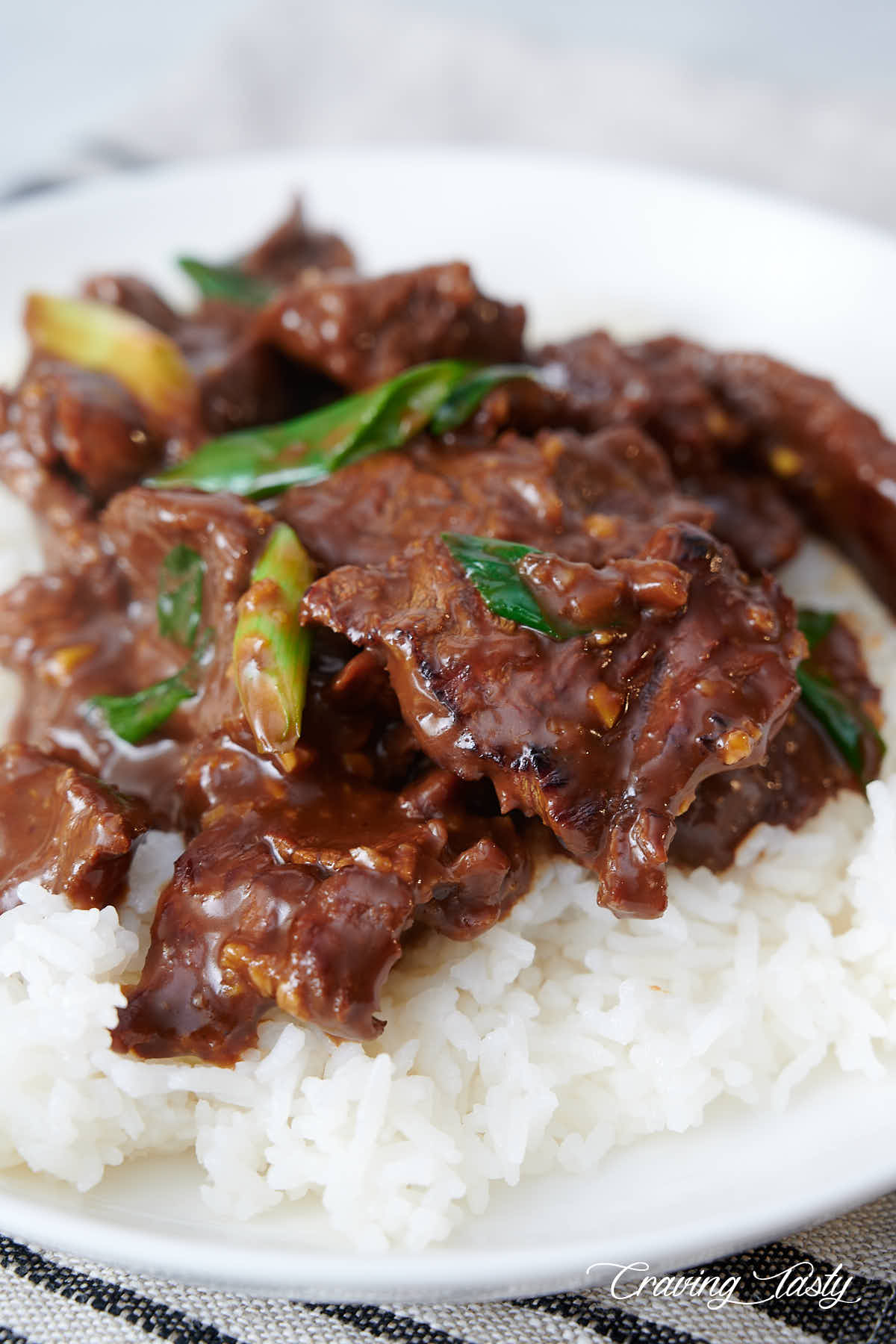
In case you wonder, Mongolian Beef has nothing to do with Mongolia. The dish is as much Mongolian as French Dressing is French.
The true origins of Mongolian Beef are not clear. Some believe that this dish originated from China, where naming restaurants or dishes after Mongolia is appealing to the local population. Mongolia's harsh continental climate has greatly influenced its traditional diet, which primarily consists of dairy products, meat, and animal fats, with a noticeable shortage of vegetables and spices.
In contrast, a meat-rich diet in China is a luxury that few can afford. What Mongolians eat is perceived as very desirable in China. Hence, in many Chinese restaurants, it's common to see dish names such as Mongolian Beef, Mongolian Chicken, etc.
Others argue that the name is just an exotic name invented by Chinese-American restaurateurs and food marketers to increase the appeal of the dish. That surely makes sense - stir-fried beef doesn't sound nearly as special as Mongolian beef.
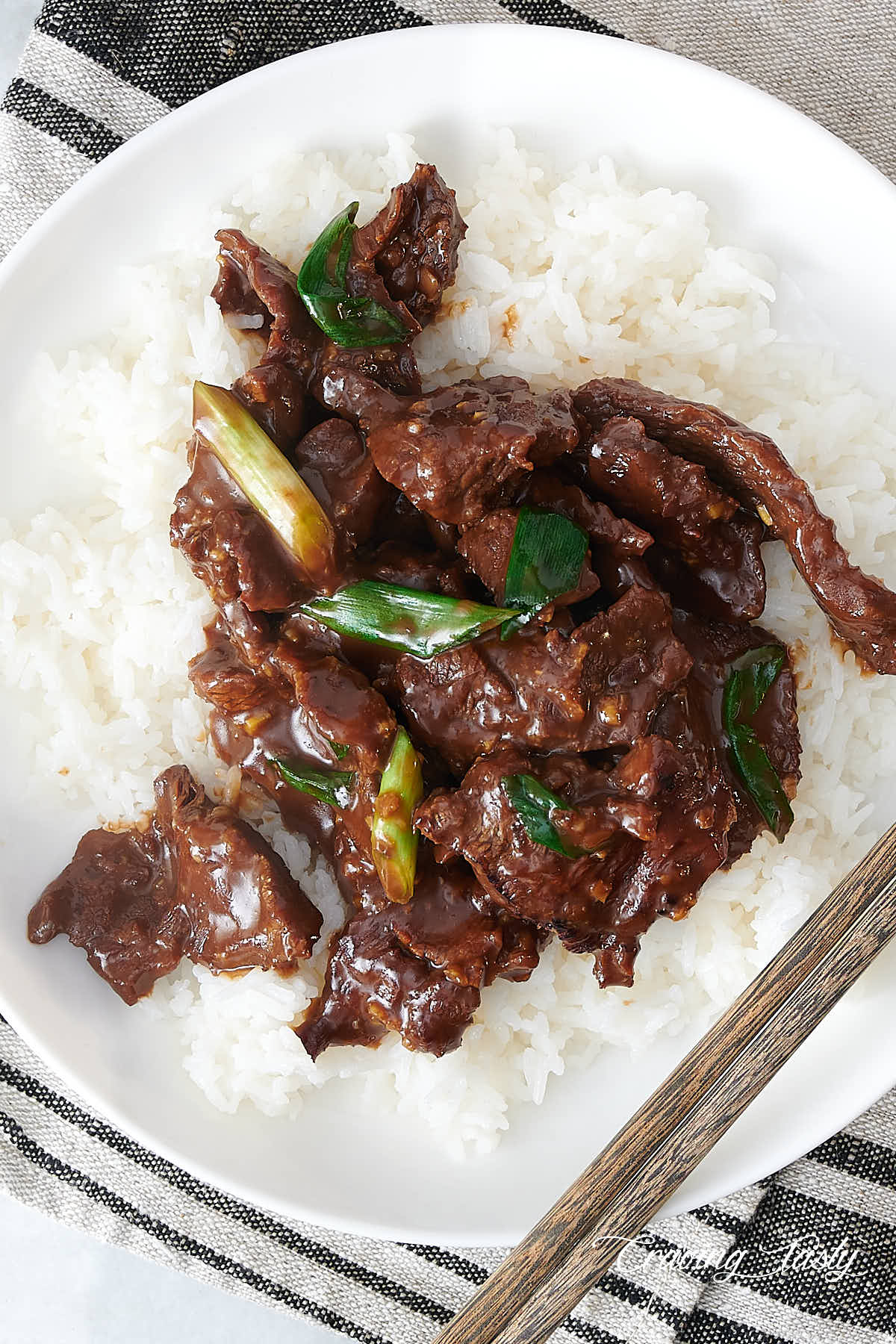
Selecting the meat
The choice of beef for this dish is very important. You want to pick the cut that is inherently tender. My favorite cuts are flanks steak (most commonly used to make Mongolian Beef), beef tenderloin and sirloin tip, also known as flap meat or' faux hanger' steak. The sirloin tip is the best value of the three as it's least expensive of the three.
I also discovered that beef chuck works just as well for making Mongolian beef. It's a little tougher, and the cooking time is short, so I cut it thinly across the grain and pound with a tenderizer (the spiked side). This works wonderfully, giving me perfectly tender meat.
Using dark soy sauce
I incorporated dark soy sauce in this dish, after trying it in my Thai pork recipe. Dark soy sauce is less salty, has a deeper color and more body and is commonly used in Asian cooking. When you order Mongolian beef from restaurants, chances are that they used dark soy sauce to make that velvety smooth sauce.
This type of soy sauce is readily available at most, if not all, local Asian grocery stores. If you can't find it, you can order online or substitute with low sodium soy sauce.
Serving Mongolian beef
Plain white jasmine rice is my top choice here. It perfectly complements the richly flavored, saucy beef. You can also serve this dish with Japanese-style ramen noodles or steamed vegetables. such as broccoli, green beans, cauliflower, and more.
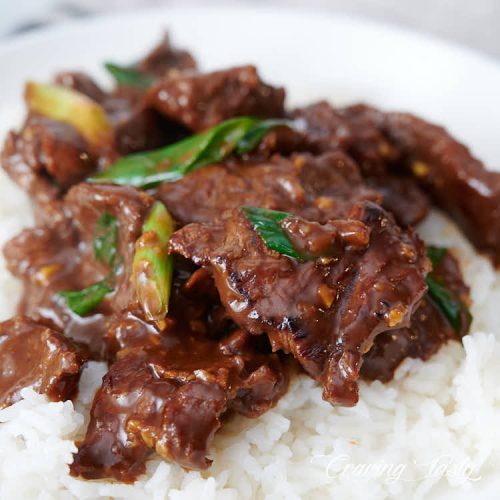
Ingredients
- 2 lbs flank steak or beef tenderloin, flap meat/sirloin tip sliced across the grain into ¼” thin pieces
- 1 1/3 cups Jasmine rice uncooked
- 2 Tbsp peanut oil for frying; or any other cooking oil
- 4 garlic cloves minced
- 1 inch fresh ginger peeled and minced
- 5 green onions cut on the diagonal into 1-inch pieces
For the marinade:
- 2 Tbsp dark soy sauce
- 4 Tbsp low sodium soy sauce
- 2 Tbsp oyster sauce
- 2 Tbsp Shaoxing rice wine or sherry
- 4 tsp cornstarch
- 2 tsp sesame oil
- 4 tsp honey or white sugar
- 1 tsp sea or kosher salt plus more to taste
- ¼ tsp white pepper
Instructions
- Add all of the ingredients for the marinade to a medium bowl and whisk. Add the sliced beef and mix. Set aside and let marinate for about 15-20 minutes at room temperature.
- Meanwhile, cook the 1 1/3 cups of jasmine rice. This will give you 4 cups of cooked rice.
- Heat 2 tablespoons of oil in a wok or a large skillet over medium-high heat. Transfer the beef to the wok, squeezing the excess sauce out into the bowl and reserving it for later. Stir-fry the beef until just done about 4-5 minutes.
- Add the garlic and ginger and continue cooking for another minute.
- Add the remaining sauce and the green onions, and stir fry for another minute, until the liquid begins to bubble. Remove the wok from heat.
- Serve immediately over jasmine rice.
Nutrition
Recipe updated on November 28, 2019


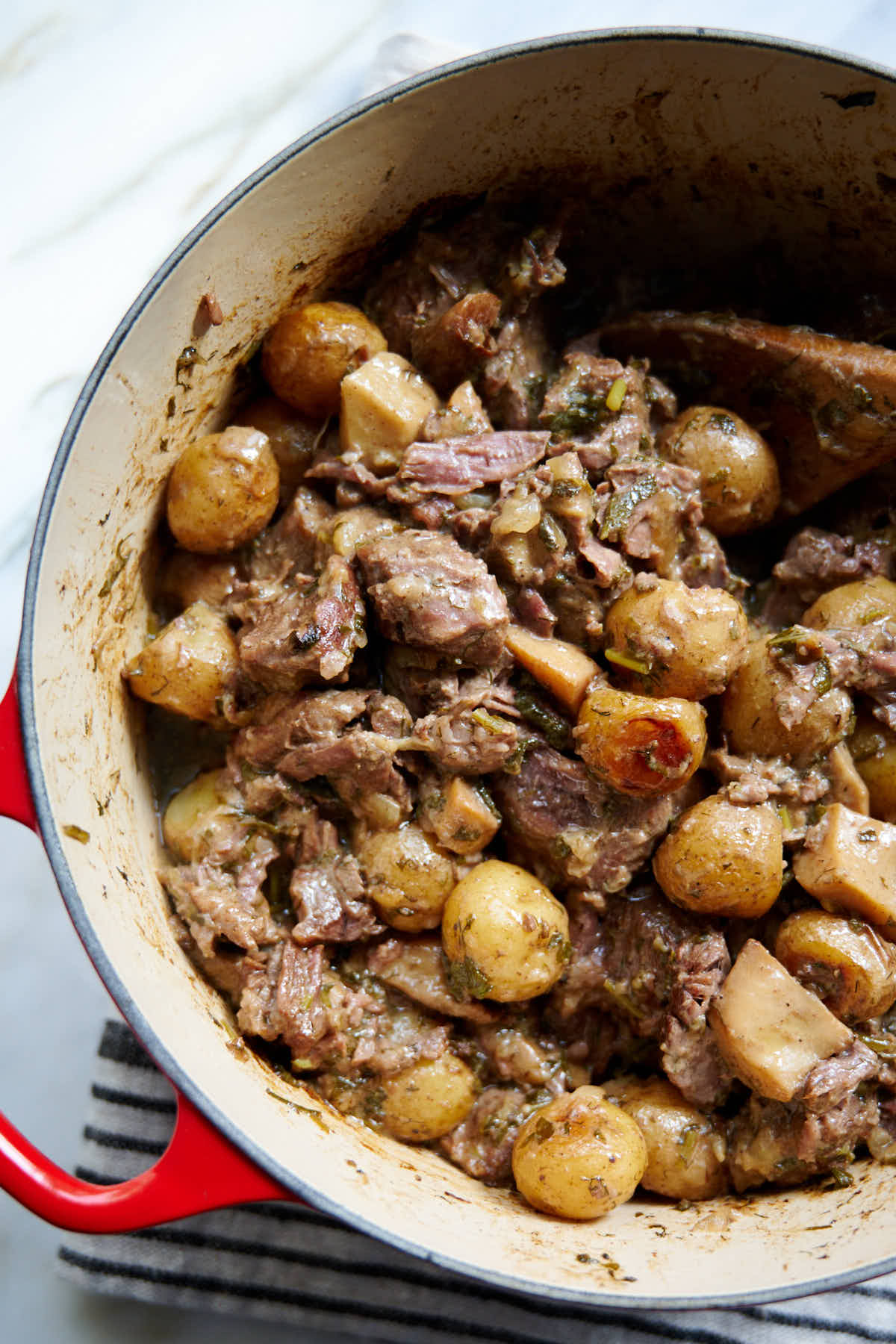

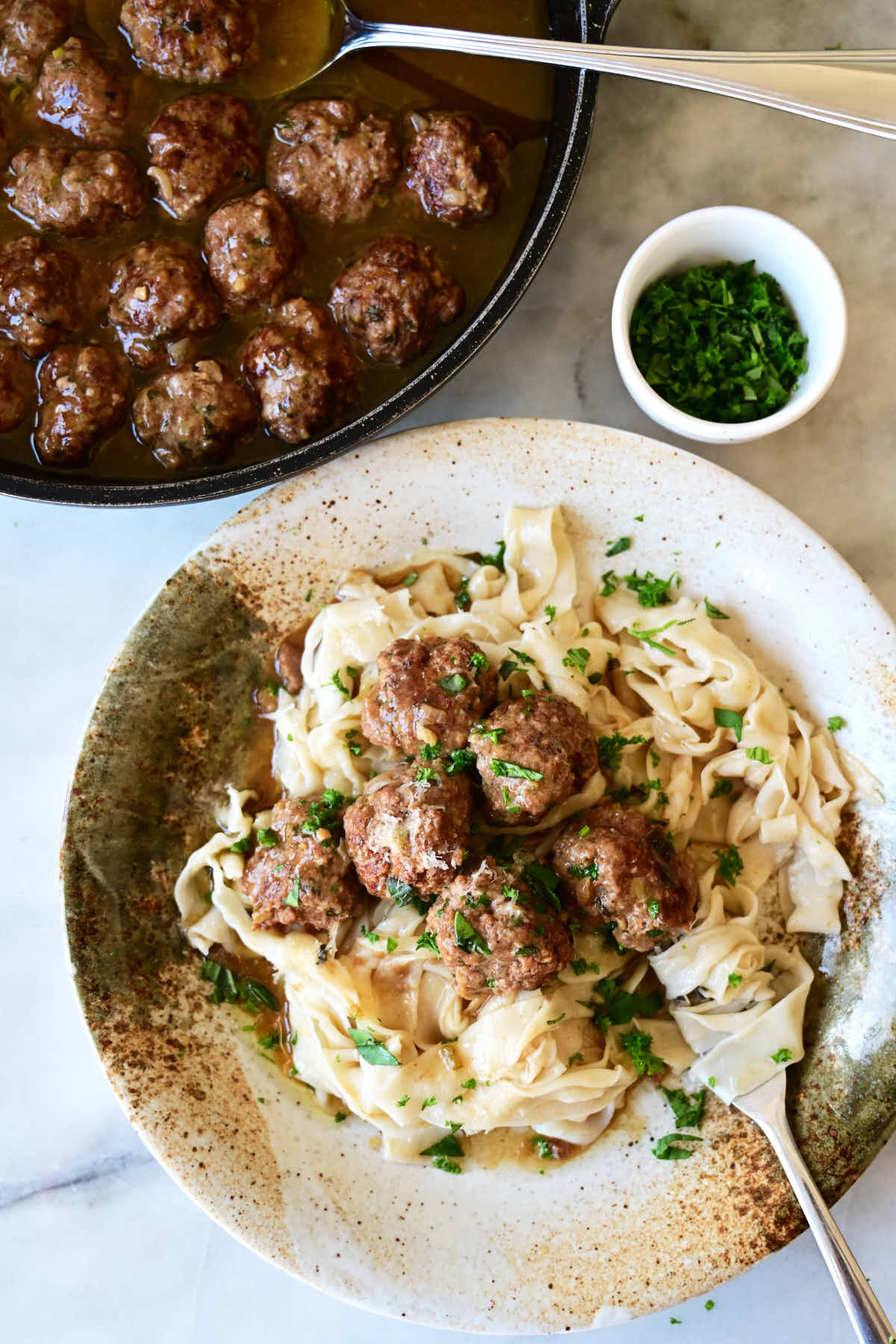

Ashley says
The layers of flavor were just incredible. Amazing as always!
victor says
Glad you liked me recipe, Ashley. Enjoy!
Margaret says
Hello
I don't think I am dumb, but in the recipe there is low sodium salt sauce. I know low sodium is low salt, but what kind of sauce - tomato, Worcestershire???
Cheers
victor says
Lol... in the post it says 'low sodium soy sauce', in the recipe - 'low sodium sauce'. My bad. Fixed.
Jen says
Made this tonight exactly to the recipe. So easy and so delicious! The kids loved it. This is a definite keeper!!! Thank you!
victor says
Glad to hear that, Jen. Be sure to try my chicken fried rice recipe, my kids love it and it's quicks and easy to make.
Reynalda Engelberg says
Hey, I love your Blog Post. I recently completed an post on storing beef. I like to make my own meat for New Year!. I will be creating a fun dessert to go with it. The kids will be at home with me and I am positive they are going to love it.
Kathy says
I'm curious as to what brand of ramen noodle you use. I am having a difficult time finding anything but the instant ramen noodle soups.
victor says
I think I used T&T store brand. It's a Canadian Asian grocery store chain.
Gina says
Hi Victor,
Mongolian Beef is one of my favorite dishes.
I never had a clue that Mongolian Beef was that easy to make. This is a serious game changer here. I guess I know what I am eating this weekend!
Thank you!
victor says
Yes, it's super easy to make and this particular recipe is amazing - really nice flavors and none of the extreme sweetness that you will encounter in some recipes out there. Good luck!